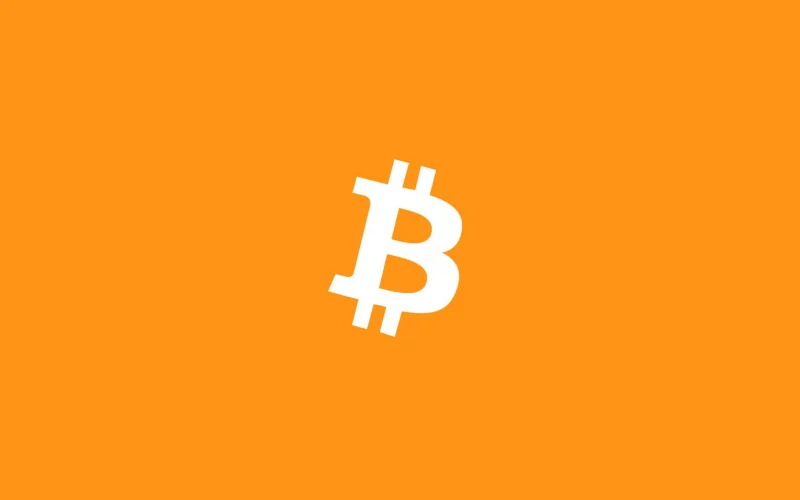Table of Contents
- Bitcoin (BTC) key figures
- Bitcoin (BTC) USD Price Chart
- Useful resources about Bitcoin (BTC)
- How to buy Bitcoin (BTC)
- Bitcoin prices and some historical dates. Chart analysis of BTC and crypto predictions.
- Bitcoin definition: what is it?
- How does Bitcoin work?
- Explaining the Bitcoin Blockchain
- What is Bitcoin used for? What is its use?
- What are the wallets for storing Bitcoins (BTC) and crypto?
- Frequently asked questions about the cryptocurrency Bitcoin (BTC)
- Discover the prices (USD) of other cryptocurrencies in 2022
Bitcoin (BTC) key figures
Bitcoin (BTC) cryptocurrency price in USD
- Last Price: see above
- CoinMarketCap rank: 1*
- Total capitalization: $708,114,749,934*
- Diluted capitalization: $783,448,917,238*
- Circulating supply: 18,946,850.00 BTC*
- Maximum number of outstanding tokens: 21,000,000 BTC*
- All-time high (ATH): $68,789.63*
*Updated on 2022/02/02
Bitcoin (BTC) USD Price Chart
Useful resources about Bitcoin (BTC)
- Website link: http://bitcoin.org
- Blockchain explorer link: https://www.blockchain.com/explorer
- Network link: https://twitter.com/bitcoin
- White paper link: https://bitcoin.org/bitcoin.pdf
- Source code link: https://github.com/bitcoin
How to buy Bitcoin (BTC)
Binance – 20% off
Binance exchange is currently one of the hottest platforms and is one of the global leaders in the cryptocurrency market. With its easy-to-read and easy-to-learn interface, Binance exchange is very suitable for newcomers worldwide. The exchange transaction fees there are also among the lowest in the market, especially when paid with the exchange’s house token, BNB.
FTX – 5% off
Notably known for the low fees the platform offers and its ease of use, FTX is a must-have exchange for users wanting to trade their cryptocurrencies. FTX exchange is also known for its derivatives, allowing for exposure to baskets of assets or certain market trends.
Kucoin – 10% off
Launched at the same time as Binance, the Kucoin exchange has had more limited success but has still demonstrated its seriousness over the past few years, including not hesitating to stop the listing process of some unscrupulous projects. The fees are also very low and the user experience is clear and pleasant.
Bitcoin prices and some historical dates. Chart analysis of BTC and crypto predictions.
January 3, 2009: Birth of Bitcoin
It was on January 3, 2009, that Satoshi Nakamoto, the mysterious founder of Bitcoin, mined the very first block of Bitcoin. To prove that he had not started mining earlier, he included in this first block the now-famous front page of the Times of the same day, which was titled “Chancellor On Brinks Of Second Bailout For Banks”. Quite a symbol.
May 21, 2010: Pizza Day
Laszlo Hanyecz buys (via an intermediary) 2 pizzas for 10 000 bitcoins (Bitcoin was trading at 0.0035 USD in the cryptocurrency market), which makes them (in retrospect) the most expensive pizzas in history. Hanyecz is not just anyone, since he was also the one who, a month earlier, was the first to mine Bitcoin on a graphics card (GPU).
June 15, 2011: Wikileaks
The famous website Wikileaks, which publishes confidential documents, including those of the U.S. military, is under sanctions that threaten its economic sustainability, based on donations. Indeed, Visa and Mastercard stop providing their services, under pressure from Washington. From now on, Wikileaks will accept donations in the cryptocurrency Bitcoin.
February 2014: Bankruptcy of MtGox
While it was the main platform for conversions between fiat currencies and cryptocurrencies, the MtGox platform collapses, a victim of one hack too many and unprofessional management. It will leave many customers out of pocket and its fall could well have precipitated the end of the Bitcoin adventure.
August 2017: hard fork between BTC and BCH
In August 2017, after a long and painful war, the separation between supporters of small blocks and big blocks was consummated. The big blockers argued for an increase in the size of Bitcoin blocks. When they did not get their way, they migrated to their own version of Bitcoin, the cryptocurrency Bitcoin Cash (BCH), which implements larger block sizes (8 MB on BCH versus 1 MB on BTC).
May 11, 2020: Bitcoin’s third halving
On May 11, 2020, the rewards miners receive for each block (excluding transaction fees) were halved from 12.5 BTC per block to 6.25. These halving of rewards, called halvings, are real events in the Bitcoin sphere, as they are a concrete materialization of Bitcoin’s programmed and deflationary money-issuing policy.

Bitcoin definition: what is it?
Bitcoin is the very first of the cryptocurrencies, both chronologically and in terms of capitalization This cryptocurrency was created in 2008-2009 by Satoshi Nakamoto, and it has since undergone a staggering evolution, both in terms of adoption (by individuals and merchants, but more recently also by businesses) and from a technical point of view.
Of all the cryptocurrencies, if you had to own only one, it is certainly this one!
How does Bitcoin work?
Bitcoin is a peer-to-peer monetary protocol. The Bitcoin software on your computer (or phone) communicates directly with other computers on the network. When you make a transaction, for example, to send 0.2 Bitcoin to a friend, you inform the other computers on the network that you are communicating with, which relay that transaction to other machines, and so on. In this way, the entire Bitcoin network quickly becomes aware that you want to make this transaction.
After a certain amount of time, which depends on how crowded the Bitcoin blockchain is, the transaction will be added to a new block by a miner. It will then take effect and the 0.2 Bitcoin will have effectively changed ownership.
In addition, Bitcoin has some interesting properties:
- When you have the private key controlling Bitcoin, only you can send them, and no one can stop you from doing so
- The rate at which new Bitcoins are issued is written in black and white in the code and enforced by the thousands of computers that make up the Bitcoin network. So you can be sure that there will never be more than a supply of 21 million Bitcoins. It is even possible to check the amount of BTC in circulation at any given time from one’s own Bitcoin node
- The Bitcoin network is decentralized through tens of thousands of nodes and is protected by massive computing power
Explaining the Bitcoin Blockchain
Before Bitcoin (BTC), the technical difficulty faced by early attempts at digital currency was the problem of double-spending. Considering a “digital coin,” it must be possible to send it only once to another person. Once I send it, it is no longer mine and I cannot send it to anyone else. Symmetrically, if I receive a digital coin, but I find that it has already been sent to someone else before me by the same person, that means that person is trying to scam me by sending me a fake coin. Traditionally, early versions of digital currency solved this problem by having a central server that was the source of truth about the order of transactions. It was this server that ensured that the person sending me money actually owned it and had not already spent it three days earlier.
The trick with Bitcoin was to decentralize the source of truth. Rather than a central server, the entire network agrees on a single ledger (the “blockchain”) that records all transactions in order. New transactions are written in blocks, which are added one by one to the blockchain (at an average rate of one block every 10 minutes). A block, therefore, contains several transactions. Decentralization comes from the fact that anyone can potentially be selected to propose the next block added to the blockchain, through what is called proof of work.
With proof-of-work, thousands of miners compete to be the first to solve a complex cryptographic puzzle, which amounts to randomly finding the right number within a very large set. The first one to solve the puzzle wins the right to add the next block and is rewarded for their effort and energy expended (to solve the puzzle) with new bitcoins and a transaction fee.
What is Bitcoin used for? What is its use?
Cash on the Internet
Bitcoin is the first true realization of a form of cash on the Internet that is completely decentralized and peer-to-peer. When used properly, Bitcoin is a much safer way to conduct transactions on the web: rather than giving credit card information to a third party, Bitcoin allows me to pay by signing a transaction that sends the funds to an address provided by the seller. This way, I don’t give away any secrets or confidential information, unlike the way card payments work.
So Bitcoin is the ultimate cyberspace currency!
A store of value
With its perfectly predictable monetary issuance policy and its maximum quantity of 21 million coins, Bitcoin has also established itself as a real store of value, hunting on the ground of precious metals like gold.
In a complex monetary and financial environment, where the printing of fiat money seems to know no bounds, Bitcoin is thus increasingly playing a role as a safe haven, especially in the face of inflation.
The basis for tomorrow’s financial infrastructure
Bitcoin, as a network and a protocol, can also be seen as the basis for a whole monetary and financial infrastructure. Indeed, it is on Bitcoin that new protocols such as the Lightning Network (payment channels) and RGB (smart contracts and tokens) are developing. Bitcoin would then be a settlement network on which other protocols are based.
What are the wallets for storing Bitcoins (BTC) and crypto?
Downloadable wallets
Electrum
Electrum is one of the oldest wallets that is still maintained. Available on computers (Mac, PC, Linux) and mobile, its interface is very basic, making it suitable for both beginners and advanced users, who have access to some advanced features such as coin control.
By default, Electrum connects to a random Electrum server, but it is possible to connect to your own Bitcoin node.
Sparrow
Sparrow looks a lot like Electrum, and that’s okay. This software wallet, available on a computer, is a slightly more design-oriented version of Electrum, with the addition of some visualization features, especially for transactions, which will delight most technophiles.
Unlike Electrum, Sparrow does not connect itself to an Electrum server at random, which avoids connecting to an Electrum server inadvertently. It is of course possible to connect to your own Bitcoin node.
BlueWallet
BlueWallet is one of the leading mobile wallet solutions. With its simple, elegant design and attractive UI, BlueWallet is perfect for both beginners and advanced users. For novices, it’s easy to get started with the creation of your first Bitcoin wallet and the application even supports the Lightning Network.
A new feature (Vault) also allows for the creation of multi-signature wallets, for more experienced users. Recently, BlueWallet is also available on macOS!
By default, BlueWallet connects to an Electrum server of the company BlueWallet Services, but it is possible to connect to your own node.
Specter
Specter is also one of the most popular computer portfolios, with a focus on privacy and advanced features such as corner control. In particular, this software can only be used with its own Bitcoin node, either on the same computer or a remote node. Recently, Specter has also included a “reduced” Bitcoin node, which takes up very little space on the computer (5 to 10 GB).
Hardware wallets
Ledger Nano
Ledger is one of the references in the field of hardware wallets and is among the main leaders of this market. The security and reliability of their products are internationally recognized. With a Ledger, the secrets (private keys) are stored on a secure element of high certification level and never leave the device.
The Nano exists in 2 versions S and X: the Ledger Nano X has more storage space (useful to have several applications at the same time and thus manage several cryptocurrencies without having to install/uninstall applications each time) and a Bluetooth connection.
Coldcard
Coldcard is another recognized reference in the world of hardware wallets. Bitcoin-only, Coldcard is THE hardware wallet for bitcoiners and cypherpunks, with a number of relevant security features, such as a fake PIN code allowing to show a potential thief a fake wallet, much less stuffed than the real one.
Frequently asked questions about the cryptocurrency Bitcoin (BTC)
What is a Bitcoin (BTC)?
One Bitcoin is a unit of the native currency of the Bitcoin network. There will be a maximum supply of 21 million Bitcoins and each Bitcoin can be divided up to 100 million times. The smallest unit of Bitcoin is therefore 0.00000001 BTC, which is called the satoshi.
What is the best way to buy Bitcoins (BTC)?
It depends on your profile and the amounts involved. In any case, it is necessary to guard against scams and frauds of all kinds, which may involve high risk.
How to store Bitcoin (BTC) safely?
Again, this depends on the amounts involved. In any case, you should avoid storing your private keys on devices connected to the Internet. Hardware wallets are very useful to keep your private keys offline and still be able to easily sign transactions when needed.
What are the advantages of Bitcoin?
Bitcoin is the oldest cryptocurrency and has proven over the years that it can withstand many attacks.
How can you anticipate movements in the price of Bitcoin (BTC)?
Nobody has a crystal ball! Technical analysis can help those who know how to use it to anticipate Bitcoin’s price movements. Otherwise, regular investment, for example with a Dollar Cost Averaging strategy, can help smooth out entry prices.
How to mine Bitcoin?
Today, it is necessary to use specialized machines, called ASICs, to mine Bitcoin (BTC) cryptocurrency. Mining Bitcoin on a consumer computer is never cost-effective and can damage your device (especially for laptops). But mining Bitcoin is not just for professionals, and it is possible, under certain conditions, to mine Bitcoin at home profitably.
Is it possible to farm or stake Bitcoin?
Not strictly speaking. However, it is possible to lend Bitcoins on certain custodial (Celsius, BlockFi, etc.) or decentralized platforms, usually in the form of wrapped Bitcoin.
It is also possible to generate a return on one’s Bitcoins while retaining control of them by providing liquidity for various protocols, such as the Lightning Network or certain implementations of joined transactions.
All of these activities carry risks, which are very different from one another, and it is essential to be aware of them before getting involved in the market.
Rating: 4.6/5 with over 232 votes




